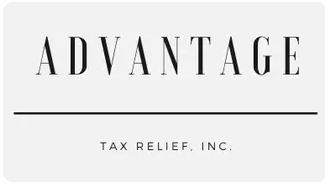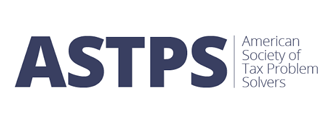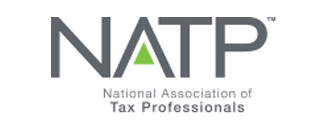Business Owners: Owe Back Taxes?
October 3, 2023
October 3, 2023
Actionable Steps for Facing IRS Debt
Entrepreneurship can be hard. Some years are good, others are not so great. But every year, like clockwork, the IRS comes calling and asks you for what’s theirs.
Small businesses often face unexpected financial challenges. Among the scariest of these challenges is unpaid taxes. Although the IRS may appear patient initially, resting on one's laurels can be a perilous decision. Once the IRS gears into action, it is known for its relentless pursuit and uncompromising measures. It is the most brutal collection agency on the planet.
So, if you find your business in this situation, it's paramount to be proactive. Here is a comprehensive guide to help you correct the course.
Note: If the IRS is claiming you owe $10,000 or more, contact our firm
immediately for a consultation and learn about your tax debt relief options.
Do Not Ignore The IRS
The first step is paying attention and taking action. You might not agree with the IRS but you can’t leave them in your pile of unread mail, or worse unopened mail. Recognize the gravity of unpaid taxes and understand that it's a liability that won't just dissipate. The sooner you confront reality, the better you can strategize a solution.
Open Lines of Communication
Ignoring IRS notices can exacerbate your situation. Instead, get proper representation from a qualified tax relief firm and have them engage with the IRS on your behalf. Firms like ours have dealt with the IRS many times before. Timely responses showcase your commitment to resolve the issue and the right firm will guide you through every step of the process.
Owing 941 payroll taxes is double jeopardy. Not only can the IRS levy and lien your business income and assets, it can pierce the corporate veil, without a court order, and go against you personally.
Understand Penalties and Interest
Unpaid taxes don't just stay static; they accumulate penalties and interest over time. With current IRS interest rates hovering at 8%, compounded daily, each day you procrastinate is costing you big time. Familiarize yourself with the accruing amounts to grasp the full scope of your liability. The more time you let pass, the higher the penalties and interest will be.
Consider Installment Agreements
The IRS often allows businesses to pay their tax liabilities over a period in monthly installments. If you can demonstrate genuine inability to pay the lump sum, they might consider an installment agreement. This can help in managing cash flows and ensuring business operations aren't severely disrupted.
Offer in Compromise (OIC)
In specific circumstances, the IRS might accept a reduced amount to settle the entire debt. Known as an Offer in Compromise, this option is contingent on demonstrating you cannot pay the full tax liability over the remaining 10-year collection statute. The right tax resolution firm will help you explore this option if you’re qualified for the program.
Temporarily Delay the Collection
If your business is in a dire financial situation, the IRS might temporarily delay its collection efforts. While this offers a short-term reprieve, it's essential to use this time wisely and strategize a long-term solution.
Seek Professional Assistance
Engaging with a tax resolution firm can be invaluable. They can guide you through the intricacies of tax laws, help keep your business open, negotiate with the IRS on your behalf, and help formulate a plan tailored to your unique circumstances.
Preventative Measures
While addressing current unpaid taxes is vital, implementing systems to avoid future discrepancies is equally crucial. Regularly review your finances, maintain clear records, and stay updated with tax regulations. Make quarterly estimated payments and be proactive throughout that year by creating a concrete plan with your qualified tax resolution professional.
Unpaid taxes are a looming storm cloud for any small business owner. While the IRS might seem lenient initially, its eventual intervention can be formidable. By acknowledging the debt, communicating promptly, understanding your options, and seeking professional guidance, you can navigate these challenges effectively. Remember, in the realm of taxes, proactive action is always better than reactive measures.
If you are facing IRS problems and owe $10,000 or more in back taxes or are being audited, reach out to our tax resolution firm
, and we will schedule a free and confidential consultation to explain your options thoroughly and help you permanently resolve your tax problem.


October 1, 2025
It seems like natural disasters such as hurricanes, floods, earthquakes, wild fires, and tornados are happening all the time and just about everywhere. Climate change also seems to be making these disasters more deadly and more destructive. Many people do step up to help survivors with needed financial donations. The only thing worse than the disasters themselves are the scammers that exploit these situations for financial gain at the expense of hard working and well-i ntentioned survivors and donors. Like yourself! Scams can take the form of fake charities and impostors posing as legitimate organizations or government agencies. Common scams typically entail vague appeals for donations without details, fake websites with names like real charities and caller ID tricks to appear legitimate. Several warnings signs of these scammers are: 1) pressure to give immediately, often preying on your emotions and not logic 2) a thank-you for a previous donation you don’t recall making 3) a request for payment by cash, gift card or wire transfer. The last are scammers’ favored payment methods because the money is easy to access, difficult to trace and almost impossible to cancel. A legitimate charity will welcome your donation whenever you choose to make it and by whatever means you choose. A great way to verify their legitimacy is to use the IRS Tax Exempt Organization Search tool at https://apps.irs.gov/app/eos/. Additionally, clients should always ask for a receipt and then check their bank or credit card statements to ensure the donation amount is accurate. If you think you were a victim of a suspected scam, you can and should report them to the Federal Trade Commission at https://reportfraud.ftc.gov/. How Advantage Tax Relief Can Assist You At Advantage Tax Relief, based in Itasca, IL, we have over a decade of experience helping individuals and businesses resolve tax issues. Our team specializes in offering personalized tax relief and tax resolution solutions tailored to your unique needs. We will work with you to assess your situation and explore your options, whether it’s an Offer in Compromise, installment agreements, or other strategies. Our experience allows us to identify the best path forward to ease your tax burden and guide you toward financial freedom. If you're facing tax debt, don't wait. Advantage Tax Relief is here to assist you with effective, professional help. Call Advantage Tax Relief today at 630-773-3200 to schedule a consultation and take the first step toward resolving your tax issues.

August 29, 2025
First, working overtime does not mean you are getting an automatic increase in your take-home pay because it is not going to be taxed. That is not what is going to happen. The tax savings will be in the form of a tax deduction when you file your Federal tax return the following year. There will be no immediate impact. Second, it only applies for Federal income taxes. It does not include State, Social Security or Medicare taxes. Third, it also only applies to the overtime premium and within certain deduction and wage limits. You can only deduct the pay that exceeds your regular rate of pay. The 'half' portion of 'time-and-a-half' compensation. For example, say you make $20 per hour and work 5 hours of overtime that week at time-and-a-half. The deduction would the Federal tax on $50 of premium pay. ($20 divided by 2 times 5 hours) Finally, the maximum annual deduction is $12,500 for single filers and $25,000 for joint filers. The deduction phases out for taxpayers with modified adjusted gross income over $150,000 (or $300,000 for joint filers).



